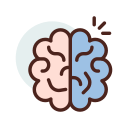Ditapis dengan
Ditemukan 2 dari pencarian Anda melalui kata kunci: subject="Amerika Serikat - Dew...

House and Senate
This book is about the two houses of the U.S. Congress, their differences, their similarties, their relationships with each other and the current status of American bicameralism. The word that comes to mind when when decribing such an approach is institutional
- Edisi
- -
- ISBN/ISSN
- 978-0-393-93060-3
- Deskripsi Fisik
- xxiii, 246 hlm. ; 21 cm.
- Judul Seri
- -
- No. Panggil
- -

The Legislative Branch of Federal Goverment
The book captures the dynamism of congress as an institution, one that, despite closely adhering to the basic framework of the constitution, has evolved dramatically era by era.
- Edisi
- -
- ISBN/ISSN
- 978-1-85109-712-8
- Deskripsi Fisik
- xv, 308 hlm. : il. ; 27 cm.
- Judul Seri
- -
- No. Panggil
- -
 Karya Umum
Karya Umum  Filsafat
Filsafat  Agama
Agama  Ilmu-ilmu Sosial
Ilmu-ilmu Sosial  Bahasa
Bahasa  Ilmu-ilmu Murni
Ilmu-ilmu Murni  Ilmu-ilmu Terapan
Ilmu-ilmu Terapan  Kesenian, Hiburan, dan Olahraga
Kesenian, Hiburan, dan Olahraga  Kesusastraan
Kesusastraan  Geografi dan Sejarah
Geografi dan Sejarah